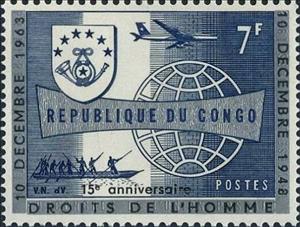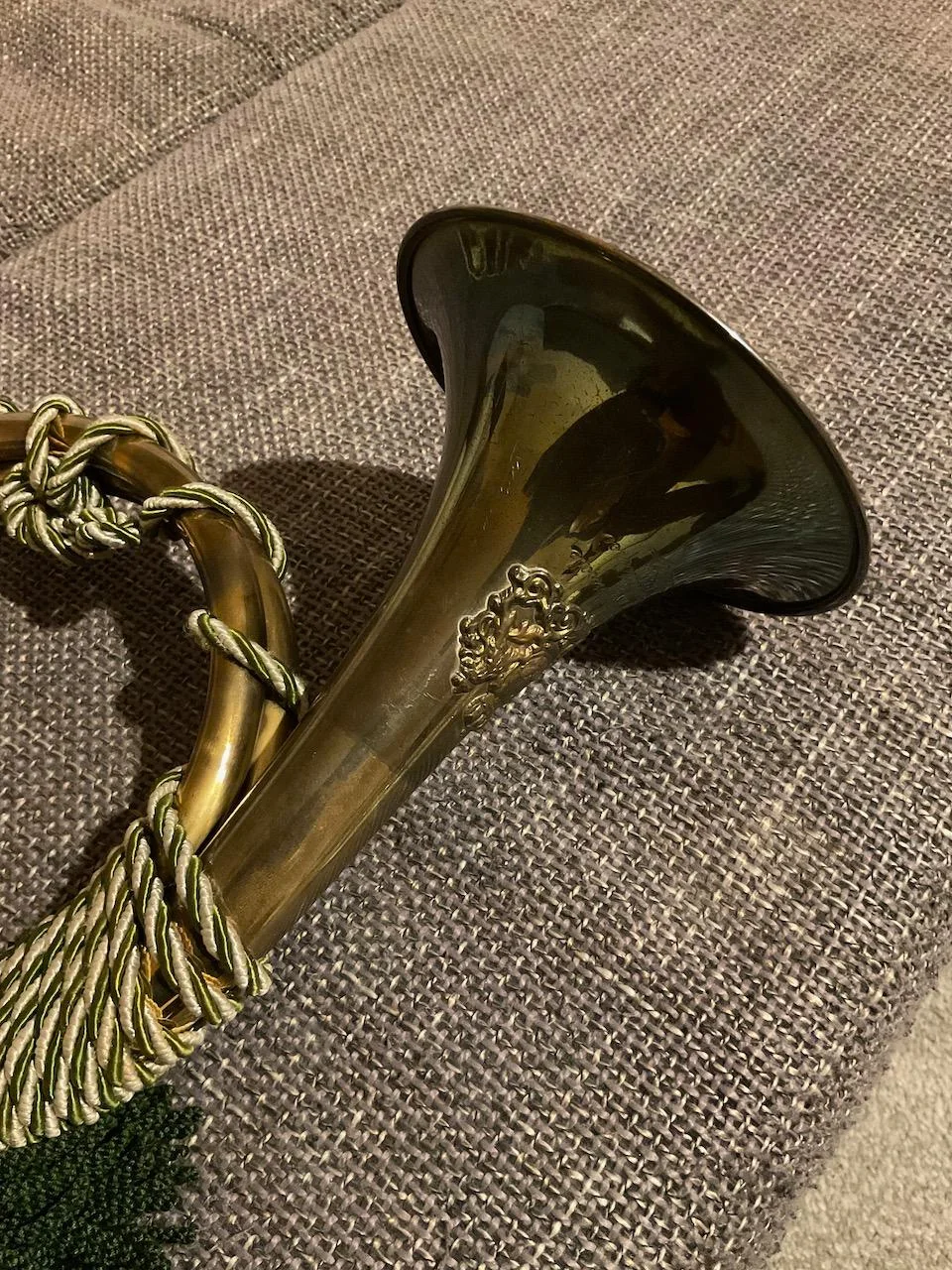Stamp: UPU Congress Issue Overprinted (Congo, Democratic Republic (Kinshasa) 1963)
UPU Congress Issue Overprinted (Congo, Democratic Republic (Kinshasa) 1963)
10 December (Congo, Democratic Republic (Kinshasa) ) within release 15th Anniversity of the Rights of Humanity goes into circulation Stamp UPU Congress Issue Overprinted face value 7 Congolese franc
| Stamp UPU Congress Issue Overprinted in catalogues | |
|---|---|
| Michel: | Mi: CD 153II |
Stamp is square format.
black overpint '10 DECEMBRE 1948 / 10 DECEMBRE 1963 / DROITS DE L'HOMME / 15e anniversaire' 1963 top left, 1948 bottom rightAlso in the issue 15th Anniversity of the Rights of Humanity:
- Stamp - (Bel:CD 473) with overprint face value 2;
- Stamp - (Bel:CD 474) with overprint face value 4;
- Stamp - (Bel:CD 475) with overprint face value 7;
- Stamp - (Bel:CD 476) with overprint face value 20;
- Stamp - UPU Congress Issue Overprinted face value 2;
- Stamp - UPU Congress Issue Overprinted face value 4;
- Stamp - UPU Congress Issue Overprinted face value 7;
- Stamp - UPU Congress Issue Overprinted face value 20;
Stamp UPU Congress Issue Overprinted it reflects the thematic directions:
An aircraft (pl. aircraft) is a vehicle that is able to fly by gaining support from the air. It counters the force of gravity by using either static lift or the dynamic lift of an airfoil, or, in a few cases, direct downward thrust from its engines. Common examples of aircraft include airplanes, rotorcraft (including helicopters), airships (including blimps), gliders, paramotors, and hot air balloons.Part 1 (Definitions and Abbreviations) of Subchapter A of Chapter I of Title 14 of the U. S. Code of Federal Regulations states that aircraft "means a device that is used or intended to be used for flight in the air."
Aviation is the practical aspect or art of aeronautics, being the design, development, production, operation and use of aircraft, especially heavier than air aircraft. The word aviation was coined by French writer and former naval officer Gabriel La Landelle in 1863, from the verb avier (synonymous flying), itself derived from the Latin word avis ("bird") and the suffix -ation.
A globe is a spherical model of Earth, of some other celestial body, or of the celestial sphere. Globes serve purposes similar to maps, but, unlike maps, they do not distort the surface that they portray except to scale it down. A model globe of Earth is called a terrestrial globe. A model globe of the celestial sphere is called a celestial globe
The post horn is a valveless cylindrical brass instrument with a cupped mouthpiece. The instrument was used to signal the arrival or departure of a post rider or mail coach. It was used by postilions of the 18th and 19th centuries.
Rowing is the act of propelling a human-powered watercraft using the sweeping motions of oars to displace water and generate reactional propulsion. Rowing is functionally similar to paddling, but rowing requires oars to be mechanically attached to the boat, and the rower drives the oar like a lever, exerting force in the same direction as the boat's travel; while paddles are completely hand-held and have no attachment to the boat, and are driven like a cantilever, exerting force opposite to the intended direction of the boat.






